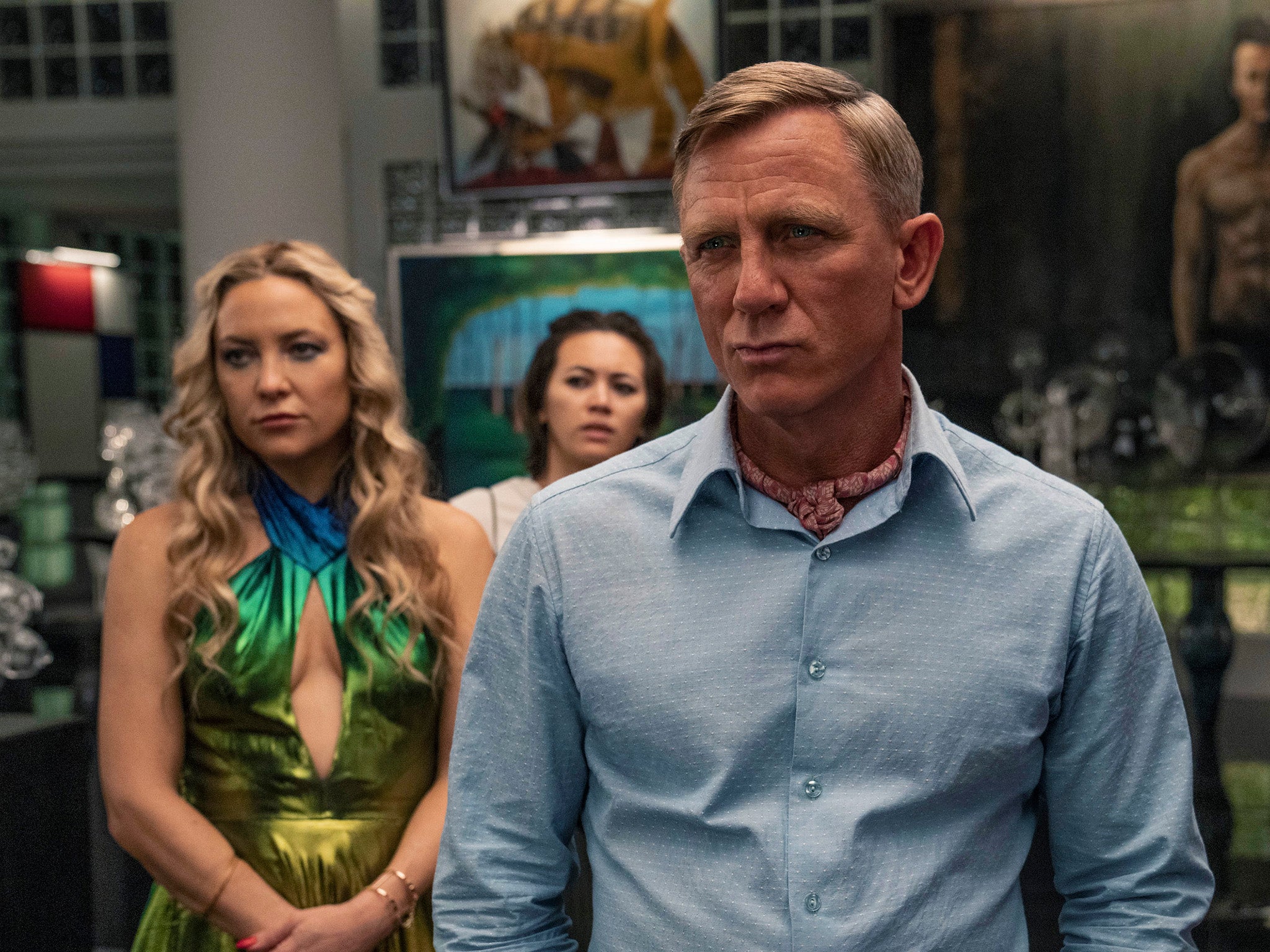The strategic cinematic twist Netflix is offering with Glass Onion: A Knives Out Mystery
The streaming giant has got the big US chains on board for the film’s week-long cinematic release around Thanksgiving, boosting its efforts to generate cultural capital, writes James Moore


If you want to see Glass Onion – Netflix’s critically acclaimed follow-up to director Rian Johnson’s Knives Out – you’d best get your skates on.
There are just a couple more days before Daniel Craig and company temporarily vanish from screens before reappearing on the streaming service. Make no mistake, the film’s performance on the platform, in terms of eyes on streams, is Netflix’s overriding concern – and is the premise on which it will judge the project’s success or failure.
But the cinematic release of Glass Onion offers an intriguing twist in its strategy, and one that fans of the whodunnit – the revival of which Knives Out has helped to catalyse – might appreciate.
Netflix showing its films in cinemas has previously been all about qualifying for awards. A few days on a few screens, and then they’re streaming in time for the Oscar campaigns to start. So no window of exclusivity for cinema operators, which agree to the company’s stringent conditions, including that they guard the box-office returns like the US Secret Service guards a day-tripping president. Netflix doesn’t do numbers.
Glass Onion, however, offers the cinemas a window of exclusivity. Not a long one, it’s true. It is a little under a month before the film appears on the homepages of subscribers, just in time for viewing after the Christmas dinner table has been cleared. But the window is there.
Cannily, Netflix has timed its cinematic release to coincide with another holiday: Thanksgiving in the US, when it might be able to tempt Americans who want to shake off the after-effects of the annual orgy of eating in their local multiplex.
It has already tempted the big American chains. They have previously shunned Netflix releases, but are now on board. Short of inventory as they are, this makes sense. The first film in the franchise, Knives Out, grossed $313m (£259m) on a $40m budget. Given the buzz about the latest instalment, Glass Onion can be expected to generate some useful coin for them.
There is no corresponding holiday in the UK, but the main chains here are also on board. You might have to hunt around a bit. Glass Onion is not doing Marvel numbers in terms of screens, but you should be able to find it easily enough.
So, Benoit Blanc, what’s Netflix really up to? An experiment, most likely.
Glass Onion doesn’t feature any superheroes. Blanc – “the last of the great gentleman sleuths” – relies on his brain, Craig’s hamming it up, and that wildly over-the-top Southern US accent and charm.
But Netflix has invested superhero-like numbers into the project, having spent $469m on the rights to two Knives Out sequels, including a reported $100m each for director and star, when they were put up for auction. That’s some investment.
A decent opening, which seems likely, would help to defray a chunk of those eye-popping costs. But that’s not the main aim here. It’s the cultural returns that the streaming giant is really after.
Cultural impact is something it has struggled with. Netflix has spent big on films before. The Old Guard, a fine comic-book adaptation featuring Charlize Theron, would be one example. Red Notice, which proved less than the sum of its parts (the Rock, Gal Gadot, Ryan Reynolds), is another. The Gray Man, an actioner featuring Ryan Gosling and Chris Evans, boasted a $200m budget. But the standard Netflix cinematic release pattern generated less than half a million, per Box Office Mojo. Is anyone talking about it now?
The cultural imprint of such releases has proved strictly limited. Seen any merch for any of those movies around? Do you remember what they were about? You might have to think a bit. Maybe the algorithm will put them into your “watch again” list at some point in the future. Maybe not.
Needless to say, $200m is a lot to spend to see a film vanish into a cultural netherworld. You don’t get much bang for your streaming buck after the initial hype. Future subscribers can’t be tempted with the prospect of dipping into your library when they’ve barely heard of half of the films in it, even when they’re good enough to merit a second or third watch.
Cultural returns ultimately deliver financial returns via a process of more subs, less churn. A successful cinematic release for Glass Onion could deliver more of them.
That Netflix is showing itself willing to experiment like this will certainly be welcomed by investors – especially given the roadblock the group hit in the early part of the year – as much as it will be welcomed by lovers of film. Pictures like this one were made for the large screen, and deserve a little more time there.
Join our commenting forum
Join thought-provoking conversations, follow other Independent readers and see their replies
Comments
Bookmark popover
Removed from bookmarks